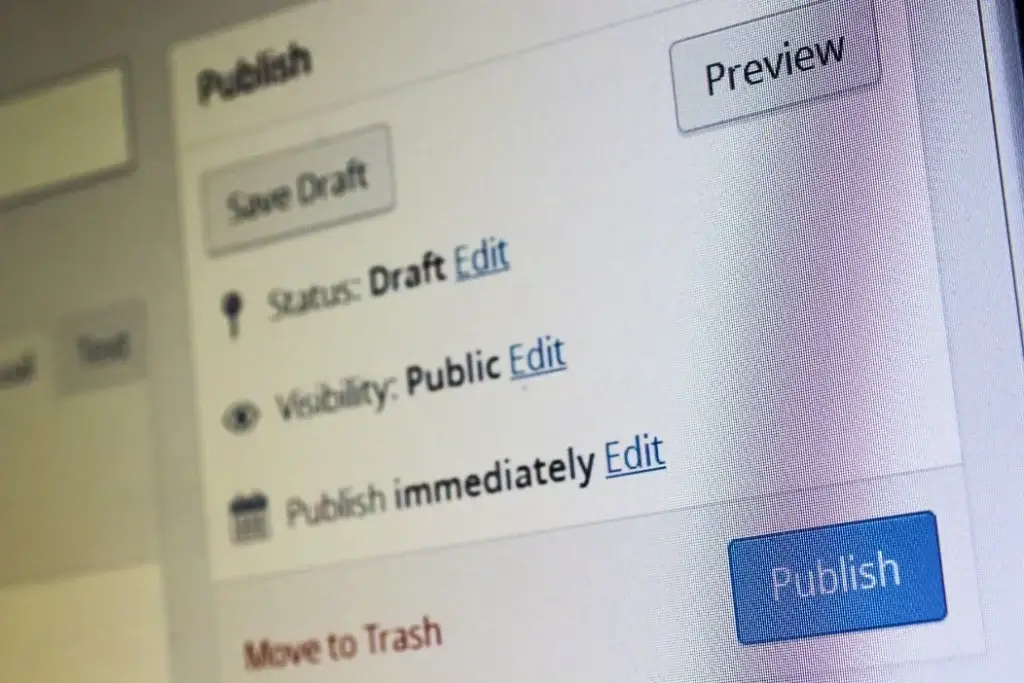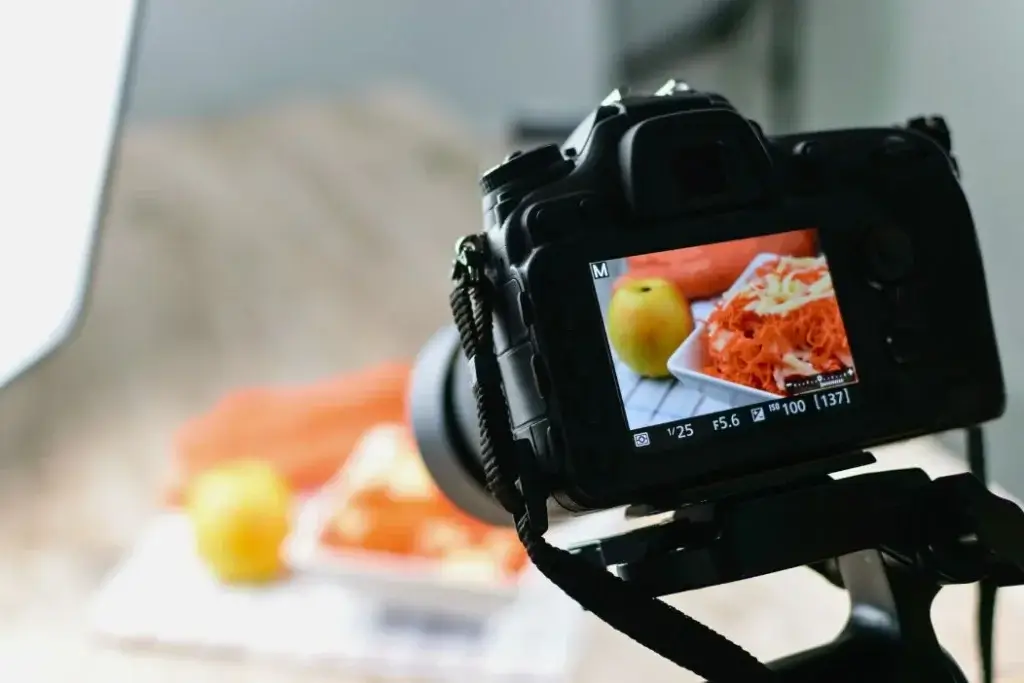So, you’re ready to dip your toes into the world of food blogging, like stepping into a bustling kitchen full of potential.
But where do you start?
How do you turn your passion for food into a successful blog that captures the attention of foodies everywhere?
Well, let’s break it down step by step and explore the ingredients you need to cook up a delectable food blog that will have readers coming back for seconds.
Table of Contents
Choose a Niche:
When starting a food blog, it’s essential to choose a specific niche that reflects your passion and expertise in a particular aspect of food culture. Food trends are constantly evolving, so it’s important to pick a niche that excites you and has the potential to attract a dedicated audience.
For example, if you’re passionate about plant-based cooking, you could focus on creating and sharing innovative vegan recipes to tap into the growing interest in plant-powered cuisine.
Recipe development is a key aspect of carving out your niche. You’ll want to experiment with different ingredients, flavors, and cooking techniques to create unique and delicious recipes that set your blog apart. Consider incorporating food trends into your recipe development process to keep your content fresh and relevant.
For instance, if there’s a surge in interest in gluten-free baking, you could work on developing and perfecting gluten-free dessert recipes to cater to this trend.
Choosing a niche that aligns with your interests and expertise won’t only make your food blog more enjoyable to write but also more compelling for your audience.
Select a Blogging Platform:

So, you’ve chosen your niche, and now it’s time to select a blogging platform.
The blogging platform is where all the magic happens.
You’ll want to consider platform options, user interface, and customization features to make sure it aligns with your vision for your food blog.
Platform Options
As you consider starting your food blog, it’s essential to select a blogging platform that aligns with your goals and technical abilities. When choosing a platform, consider the blogging community it offers.
Platforms like WordPress and Blogger have large communities, making it easier to connect with other food bloggers for support and collaboration.
Additionally, social media integration is crucial for promoting your content. Look for platforms that seamlessly integrate with social media networks, allowing you to easily share your recipes and engage with your audience.
For example, platforms like Squarespace and Wix offer built-in social media tools that simplify the process of sharing your content across various platforms.
Keep these factors in mind as you explore different platform options for your food blog.
User Interface
If you’re considering starting a food blog and you’ve chosen a platform, the next step is to delve into the user interface and functionality of the platform you’ve selected. Here are some key aspects to consider when evaluating the user interface of your chosen blogging platform:
- User Engagement: Look for features that encourage interaction, such as comment sections, social media integrations, and easy sharing options for your readers.
- Interface Design: Assess the platform’s design flexibility and ease of customization. A visually appealing and user-friendly interface is crucial for attracting and retaining visitors.
- Mobile Responsiveness: Ensure that the platform offers responsive design options, allowing your blog to be easily accessible and navigable on various devices.
- Content Management: Evaluate the platform’s content creation and management tools to ensure they align with your blogging goals and needs.
Customization Features
When selecting a blogging platform, explore the customization features to tailor the look and feel of your food blog to match your unique style and brand. Customization features are essential for implementing your branding strategies and making your blog stand out.
Look for platforms that offer a wide range of customizable options such as themes, fonts, colors, and layouts. This allows you to create a visually appealing and cohesive design that reflects the personality of your food blog.
Additionally, consider the flexibility of the platform in terms of adding custom widgets, plugins, and integrating social media to enhance user engagement. By leveraging these customization features, you can effectively establish a strong brand identity and create a memorable experience for your audience.
Set Up Your Blog:

Now that you’ve chosen a blogging platform, it’s time to set up your blog. You’ll need to customize your design to reflect your unique style and brand. Then, install the necessary plugins to enhance the functionality of your blog.
Choose a Platform
To set up your food blog, you’ll need to choose a platform that suits your needs and preferences. Here are some key factors to consider:
- Platform Comparison: Compare different blogging platforms like WordPress, Blogger, Squarespace, and Wix. Look at their features, ease of use, customization options, and pricing to find the best fit for your food blog.
- Blogging Community: Consider the blogging community associated with each platform. Some platforms have larger and more supportive communities, which can be beneficial for networking, sharing ideas, and getting advice.
- Design and Templates: Explore the design and template options offered by each platform. Choose one that allows you to showcase your food photography and recipes in a visually appealing way.
- Mobile Responsiveness: Ensure that the platform you choose is mobile-friendly, as many users will be accessing your food blog from their smartphones and tablets.
Customize Your Design
Once you have selected your preferred platform, it’s time to start customizing your blog’s design to create a visually appealing and engaging experience for your readers.
First, consider your color scheme. Choose colors that reflect the mood and style of your blog. For a food blog, warm and appetizing colors like deep reds, greens, and browns often work well.
Next, focus on font choices. Select easy-to-read fonts for your body text, and use a more decorative font for headings and titles. This will give your blog a polished and professional look while ensuring readability. Experiment with different combinations until you find the perfect match.
Install Necessary Plugins
After customizing your blog’s design to create an engaging experience for your readers, it’s time to enhance its functionality by installing the necessary plugins to set up your blog for success.
Here are some plugin recommendations to get you started:
- SEO Plugin: Install a reliable SEO plugin like Yoast SEO or All in One SEO Pack to optimize your blog for search engines and improve its visibility.
- Social Media Sharing: Add a social media sharing plugin such as Social Warfare or AddToAny to make it easy for your readers to share your content across various platforms.
- Backup and Security: Consider installing a backup plugin like UpdraftPlus along with a security plugin such as Wordfence to protect your blog from potential threats.
- Performance Optimization: Enhance your blog’s performance with a caching plugin like W3 Total Cache or WP Super Cache to improve loading speed and overall user experience.
Design Your Blog:

When embarking on the journey of creating your food blog, it’s recommended to use Elementor for crafting a clean and inviting layout that effectively highlights your culinary masterpieces. The design of your blog plays a pivotal role in not only grabbing the attention of your readers but also in maintaining their interest. Elementor Website Builder allows for the strategic use of color psychology to bring forth specific emotions and connections with your brand.
Consider incorporating warm hues like red and orange to stimulate the appetite, and green for its association with freshness and health. Moreover, visual branding is key to developing a unified and memorable appearance for your blog. Elementor’s versatile tools enable you to consistently apply logos, fonts, and imagery, thereby fortifying your brand’s identity.
Create High-Quality Content:

To create high-quality content for your food blog, focus on delivering valuable and engaging posts that resonate with your audience’s culinary interests and aspirations.
Here are four tips to help you improve your writing skills and enhance your food styling:
- Tell a Story: Engage your readers by sharing personal anecdotes, cultural backgrounds, or historical insights related to the dishes you feature. Transport them to the bustling streets of Italy as you describe the aroma of freshly baked pizzas or to the tranquil tea plantations of Japan as you narrate the art of matcha preparation.
- Use Vivid Descriptions: Paint a picture with your words. Describe the vibrant colors, tantalizing textures, and mouthwatering flavors of your culinary creations. Help your audience visualize the sizzle of a perfectly seared steak, the delicate swirls of a decadent cheesecake, or the refreshing zest of a citrus-infused salad.
- Offer Practical Tips: Share food styling tips and tricks to help your readers elevate their own culinary presentations. Provide guidance on plating techniques, garnishing ideas, and photography angles to inspire them to create visually stunning dishes.
- Create Engaging Recipes: Write clear, concise, and easy-to-follow recipes that empower your audience to recreate the delectable dishes you showcase on your blog. Break down complex cooking processes into simple steps, and include helpful tips to ensure their success in the kitchen.
Master Food Photography:

Capture the essence of your culinary creations by mastering the art of food photography, immersing your audience in a visually appetizing experience. Start by mastering food styling to make your dishes look irresistible. Experiment with different plating techniques, garnishes, and props to enhance the visual appeal of your food. Pay attention to details like lighting and angles to highlight the textures and colors of your dishes.
When it comes to editing food photos, less is often more. Enhance the natural beauty of your dishes by adjusting the brightness, contrast, and color balance. Use editing tools to remove any distracting elements and focus on the main subject. Remember that authenticity is key, so avoid over-editing your photos to the point where they look artificial.
Consider investing in a good camera and learning about composition techniques to take stunning food photos. Practice regularly and pay attention to feedback from your audience to continuously improve your food photography skills.
Engage With Your Audience:
Engage with your audience by responding to their comments, asking for their input, and creating a sense of community around your food blog. Building a community around your food blog is crucial for its success. Here’s how you can create connections and foster a vibrant community:
- Respond to Comments: When your audience takes the time to leave comments on your blog posts, make sure to respond to them. Engaging in conversations with your readers shows that you value their input and encourages them to keep coming back to your blog.
- Ask for Input: Encourage your audience to share their thoughts and experiences. You can ask for their favorite recipes, cooking tips, or even their own food stories. By doing so, you not only involve them in the content creation process but also make them feel like an integral part of your blog.
- Create Interactive Content: Host polls, quizzes, or challenges that your audience can participate in. This not only makes your blog more interactive but also fosters a sense of camaraderie among your readers.
- Feature Reader Contributions: Showcase your audience’s recipes, food photos, or stories on your blog. This not only highlights their contributions but also strengthens the sense of community within your blog.
Monetize Your Blog:

Consider exploring various avenues to monetize your food blog, allowing you to turn your passion for food into a sustainable source of income.
One option is affiliate marketing, where you can earn a commission by promoting products or services related to food on your blog. Incorporate affiliate links into your posts, and when your readers make a purchase through those links, you earn a percentage of the sale.
Additionally, you can offer sponsored content to brands. Collaborate with food-related companies to create sponsored posts, recipes, or product reviews that align with your blog’s content. This can be a lucrative way to monetize your blog while also providing valuable content to your audience.
Another approach is to offer recipe development and food styling services. As a food blogger, you have likely honed your skills in creating delicious recipes and presenting food beautifully. Use these talents to offer your services to food brands, restaurants, or even individuals who may be looking for recipe development or food styling for their own projects.
Promote Your Blog:

To grow your food blog’s reach and attract more readers, utilize social media platforms to share your content and engage with your audience.
Here are four effective ways to promote your blog:
- Social Media: Leverage platforms like Instagram, Pinterest, and Facebook to share visually appealing images of your recipes, behind-the-scenes content, and engaging captions. Engage with your followers by responding to comments and messages, and participating in relevant food-related groups and communities.
- Email Marketing: Build an email list by offering a free recipe eBook or a weekly newsletter with exclusive content. Send regular updates about new blog posts, special promotions, and upcoming events to keep your subscribers engaged and coming back for more.
- Collaborate with Influencers: Partner with food influencers or bloggers in your niche to reach a broader audience. You can co-create content, host giveaways, or participate in guest posting to tap into each other’s follower base.
- Engage with Your Audience: Encourage interaction by asking questions, running polls, and responding to comments on your blog and social media. Creating a sense of community around your blog will keep readers coming back for more.
Frequently Asked Questions:
How do I deal with negative comments and criticism on my food blog?
Dealing with negative comments on your food blog can be tough, but it’s important to handle criticism gracefully. Respond with kindness, focus on maintaining a positive atmosphere, and use feedback to improve and grow.
What are some common mistakes to avoid when starting a food blog?
When starting a food blog, avoiding burnout is key. Building credibility takes time, so be patient. Mistakes to avoid include inconsistent posting, neglecting social media, and not engaging with your audience. Stay committed and persistent.
How can I stay motivated and consistent with my food blog?
To stay motivated and consistent with your food blog, find inspiration in new recipes and stories. Maintain discipline by setting a schedule and sticking to it. Overcome challenges by seeking support from fellow food bloggers and staying connected.
What are some legal considerations I need to be aware of when monetizing my blog?
When monetizing your blog, be sure to stay on top of legal considerations like copyright laws and advertising regulations. Take the necessary steps to protect your content and ensure compliance with advertising standards.
How can I effectively network and collaborate with other food bloggers in the industry?
To effectively network and collaborate with other food bloggers in the industry, join networking groups, and attend collaborative events. Engage in recipe swaps and offer guest posts to build connections and expand your reach.
Conclusion:
So there you have it! Starting a food blog may seem overwhelming at first, but with the right niche, platform, and content, you can create a successful and engaging blog.
Remember to focus on high-quality content, stunning food photography, and building a strong relationship with your audience.
And don’t forget to promote and monetize your blog to turn your passion for food into a rewarding venture.
I hope that now you know how to start a food blog without any huge budget. Happy blogging!

